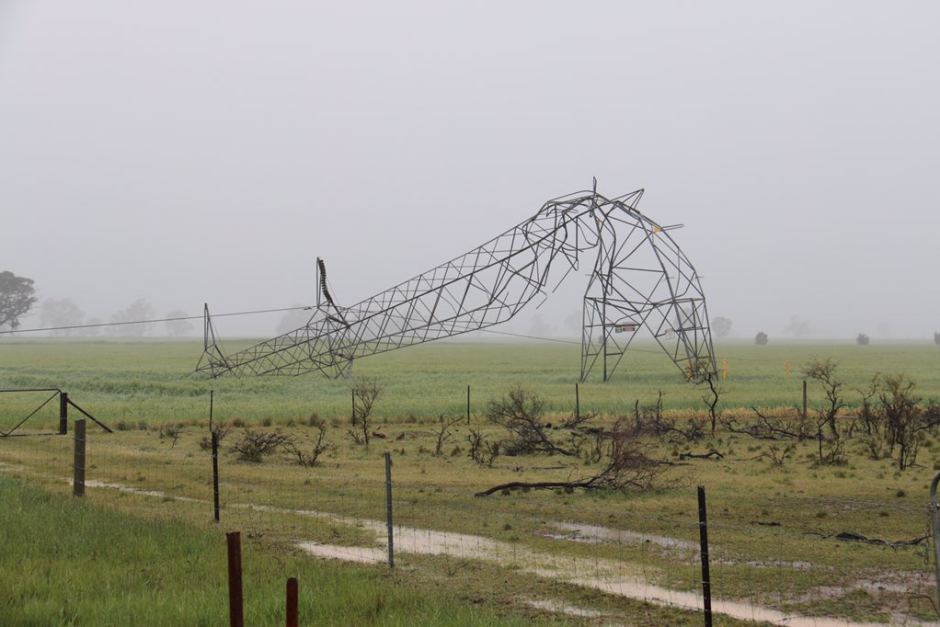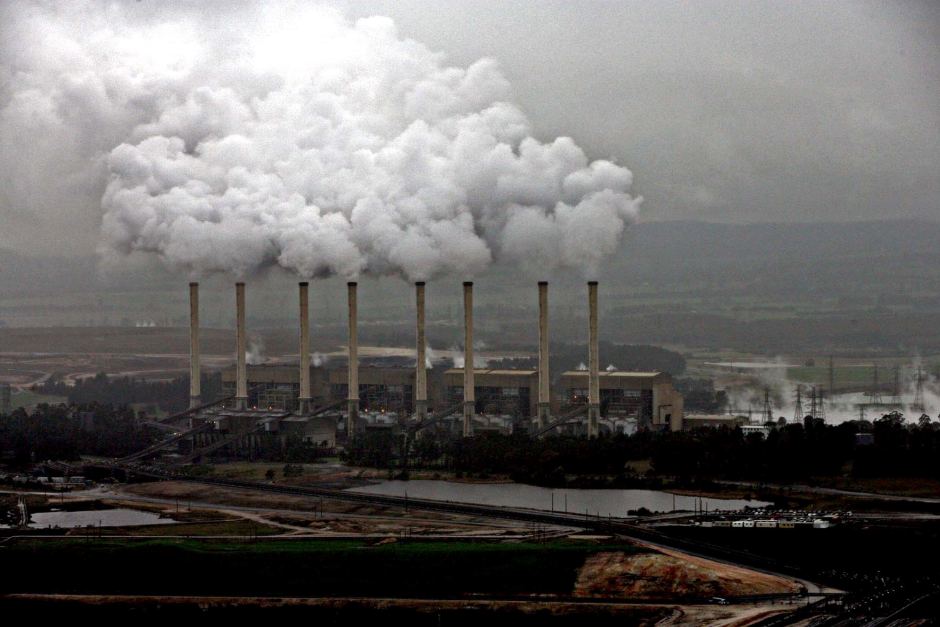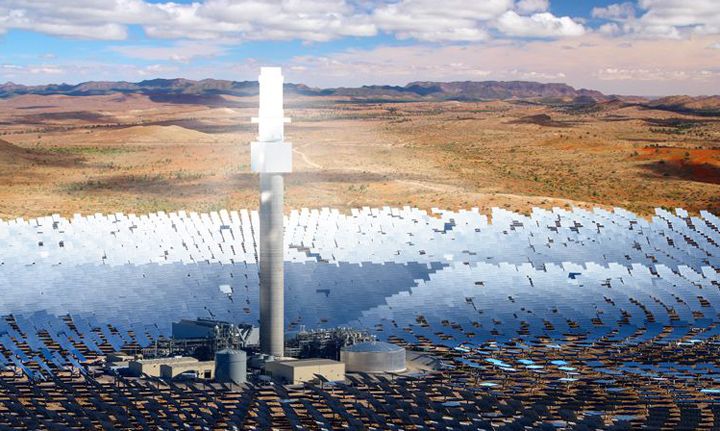
Australia’s Prime Minister, Malcolm Turnbull rightly points to the need for reliable, affordable electricity supply. He knows that 75% of Australia’s existing coal-fired power stations have passed their design date, increasingly pollute the atmosphere and operate inefficiently. In early 2017 he argued that since Australia is the worlds largest coal exporter, they should be replaced with ultra-supercritical coal fired generators. Recognising that ultra-supercritical generators are very expensive to build, he hinted that the cost of their construction might be subsidised by the Clean Energy Finance Corporation, a government agency funded to promote clean energy rather than coal use.
The Energy Minister, Josh Frydenburg went further, claiming that ultra-supercritical generators would reduce greenhouse gas emissions by as much as 40% and with carbon capture and storage (CCS) technology, carbon emissions could be reduced by about 90%. He went on to repeat his assertion that uncertainty of supply and high cost of electricity in South Australia, was the product of a too rapid transition to renewable power generation.
More recently, AEMO warned that S.A. and Victoria could experience black-outs over the next 2 years and that closure of Liddell Power Station in 2022 could result in a potential shortfall of electricity supply in NSW. The response from Turnbull was to repeat criticism of Labor State Governments for over-rapid transition to renewable energy, their failure to provide adequate storage back-up and to call for Liddell to be refurbished and kept open for 5 years beyond its intended closure date.
Critique
The first comment to make on these observations is to deplore that the imperative of reducing greenhouse gas emissions should made a political football. It is high time that Australia’s major political parties got together to formulate an effective science-based national policy on curbing greenhouse gas emissions and the inevitable transition from fossil fuels to renewable energy. The need for this transition, worldwide, needs to be both rapid and orderly since it is very likely to mediate our ability to survive on this planet.

Fig 1. One of 22 electricity pylons in the North Midlands of S.A., destroyed by an extreme wind event in September, 2016, causing a state-wide blackout. Photo: ABC News: Tom Fedorowytsch.
In Australia, the effects of global warming are already being felt in the form of an increase in the incidence, severity and duration of heat-waves, droughts, bushfires and wind events. Each of these events reverses ability of the planet to absorb CO2 and causes additional CO2 to enter and remain in the atmosphere. Bushfires and drought kill vegetation, releasing their stored CO2 in the process and leaving less vegetation to absorb on-going carbon released due to human activity. As oceans warm, their capacity to absorb additional CO2 falls, further accelerating global warming.
Secondly, it is necessary to point out the fallacy of arguments put forward to justify future use of so called ‘clean coal’ fired ultra-supercritical power stations as the best means of ensuring emissions reduction and continuity of affordable electricity supply. This is not the best alternative for the following reasons:
1. Capital cost: Ultra-supercritical power stations cost $1.5 - $3.5 billion to design and build. Investors will compare this cost with the outlay required to build clean energy power station of similar capacity and conclude that wind or solar farms can be built for a fraction of the cost of an ultra-supercritical power station and yield a much better return on capital.
2. Operating Cost: No matter how efficiently an ultra-supercritical power station operates, it can not compete with a wind or solar farm which have almost no operating costs because they obtain their fuel free and employ very few staff– no more than are needed for cleaning and maintenance.
3. Build time: An ultra-supercritical power station takes up to 6-7 years to build, compared with a wind/solar farm which can usually be built and commissioned in less than 12 months.
4. Power cost: Because ultra-supercritical generators incur much higher capital and operating costs their output must be sold at a much higher price than electricity generated from renewable energy, imposing higher energy costs on consumers.
5. Pollution: Although ultra-supercritical power stations produce around 30% less emissions than older coal fired power stations, they still emit very significant quantities of CO2 (causing global warming) and particulates (damaging health).
6. Emissions: Carbon capture and storage technology has been trialled at coal fired power stations and found to be so expensive to operate that it almost triples the cost of electricity generated, making it prohibitively expensive for consumers.
7. Gas: Gas fired power stations produce less pollution than ultra supercritical coal fired power stations and, importantly, are more versatile since they can be brought on/taken off line far more rapidly than coal fired power stations. Rapid increase in generation is essential to cover periods of sudden peak demand.
8. Investors in the energy sector are aware that a surge in demand for fossil fuels leads to an increase in price but with clean energy technology, a surge in demand results in falling price and more efficient production, making renewable generation a more attractive investment.
There is no substance to the claims made by Turnbull and Friedenburg that ultra supercritical coal fired power stations are essential to assure continuity of supply or that they can generate electricity more cheaply than other forms of generation. While coal fired power stations can – and do - assure continuity of supply it is simply not possible for them to generate electricity cheaper than wind or solar farms which are far cheaper to build, have very low staffing levels and operate on fuel which is free.
Back-Up
Australia needs to maintain back-up generating capacity in order to ensure continuity of electricity supply and stability of the National Grid in the event that any of the following occur:
At present, most back-up covering these contingencies is provided by coal fired power stations. However coal fired electricity generation can not provide back-up to maintain National Grid stability since it can not be brought on line, or taken off, at short notice to deal with spikes in demand or damage to the grid. Only battery storage, hydro and to a lesser extent gas fired generation can provide very short term response to a sudden need for additional energy.
When it comes to ensuring continuity of electricity supply Australia has a choice: It can build new coal fired power stations which will be uncompetitive by the time they are operational, or it can increase generation from solar and wind farms which are likely to be equipped with storage within 3 years. The Turnbull government has indicated a strong preference for new coal fired power stations – ultra supercritical power stations equipped with carbon capture and storage, producing lower emissions and assuring continuity of electricity supply – but not for the next 5-7 years. So, will Australia face power shortages until 2025?

Fig. 2. Hazelwood power station burned brown coal (Lignite) which emitted the equivalent of 1,400 tonnes of carbon dioxide per gigawatt hour of energy produced. Photo: AAP-Greenpeace
Closure of the Hazelwood power station, the ‘dirtiest’ emitter in Australia, with loss of its 1,600 MW capacity, places greater demand on other power stations with surplus capacity. This will reduce their capacity to deal with other power station closure or periods of peak demand – eg. during heat-waves or to provide back-up for renewable generators.
This difficulty would be exacerbated by future power station closures, possibly those at Liddell NSW, Yallourn W VIC, and Gladstone QLD. All are over 40 years old and have generating capacity of over 5,000 MW.
The alternative, seemingly rejected by the Turnbull Government is to attract investment in new solar and wind farms. Both can be built rapidly, generate cheaper electricity and are likely to have ability to provide power 24/7, possibly in less than 3 years as more efficient, higher capacity domestic and utility-scale battery storage becomes available.
For all of the reason outlined above, government has been unable to find a willing investor in ultra supercritical power houses – even when public funding for such a venture is mooted.
Storage
A solution to Australia’s so-called electricity supply crisis is to encourage investment in developing electricity storage capacity – a point on which there is common agreement among politicians. Pumped hydro involves using off-peak coal fired or renewable electricity to pump water into a high dam, release it for electricity generation when required, then pump it back into a high dam using solar energy. It offers the largest most rapid back-up storage facility - up to 500 MW over a 5 hour period. Two new pumped hydro projects which have attracted ARENA support are at Kidston, Qld and at Spencer Gulf, SA, projects expected to take 3 years to develop.

Fig 3. Solar Concentrators supply electricity 24/7 by storing heat used to generate dispatchable electricity for up to 8 hours when the sun is not shining. Photo: Ecogeneration.
The South Australian government has already planned for construction of a rapid response gas-fired power station expected to be operational within a year. It has ordered construction of the worlds largest lithium-ion battery providing 129 MWh to be completed in late 2017 and has encouraged diversified investment in renewable energy storage. The latter has resulted in approval of the worlds largest (135 MW) solar thermal plant being built near Port Augusta and scheduled to be operational in 2020.
The Queensland Government is financing transmission lines for the Kidston pumped hydro scheme generating 783 GWh/annum. Construction of Stage 1 of 2 is in progress and expected to complete in 2018. The government also intends to re-commission its Swanbank power station, converting it to gas fired and able to provide rapid response back-up when required.
Timely back-up is being provided and before 2022 it is likely that advances in battery technology will have enabled tripling of existing battery storage capacity at reduced cost. So, the position is not as dire as some would have us believe.
An increase of surplus generating capacity is already being achieved by residential take-up of solar panels by more than 1.5 million households with capacity to reduce demand on the grid by over 5 gigawatts. Up-take of solar panels is on-going and will accelerate as the price of domestic battery storage continues to fall, further reducing household consumption of electricity from the grid. Some State Governments are encouraging households to install battery storage since these batteries can be a source of energy required to maintain grid stability.
Utility scale storage other than that noted above is essential. It already exists but is expensive and has limited capacity, though cost is falling rapidly and capacity, presently limited to ~100MW, is increasing. Some technologies now being trialed and soon to be commercialised claim scalable storage capacity of 200 MW which, if demonstrated, could revolutionise grid management possibly enabling intermittent solar and wind farms to become the equivalent of base load generators.
It is open to Government to take-up mitigating measures, which reduce normal demand and to encourage households and businesses to do the same. Most governments and publicly owned enterprises in Australia have failed to do this, even though this measure could permanently and significantly reduce demand for electricity and increase availability of surplus capacity to cope with most increases in demand.
It is likely that within the next 10 years many – possibly most - of Australia’s coal fired power stations could close because of their age and inability to compete with renewable electricity generators. Ad interim, it is the responsibility of State governments to ensure that they are replaced with renewable energy generators in an orderly and timely way and that sufficient storage capacity is available to provide back-up for renewable generators.
Reforms in regulation and operation of the national grid during the transition from coal to renewable energy sources are overdue and should aim to increase competition, lower electricity costs and ease the transition to renewable energy. As indicated above, this transition is already underway and from commercial and environmental perspectives is not reversible.
Prime Minister Turnbull and his Energy Minister should ask themselves how California (the 6th largest economy in the world), Denmark, Germany and other countries have no problem in managing Grid stability when around 50% of their electricity already comes from renewable sources?
Posted by Riduna on Tuesday, 19 September, 2017
 |
The Skeptical Science website by Skeptical Science is licensed under a Creative Commons Attribution 3.0 Unported License. |